Term archive
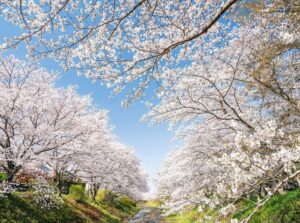
投稿タイプ:sightseeing
Cherry Blossoms Along the Tamagawa River
The Tamagawa River, which was selected as one of the "Heisei Era's Famous 100 Springs," has appeared in many poems and stories of old.
About 500 Yoshino cherry trees bloom on both banks for 1,500m along the upper reaches of the Tamagawa River off Route 24.
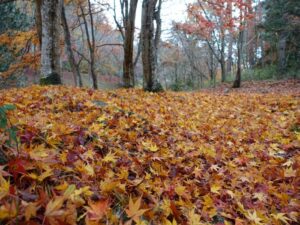
投稿タイプ:sightseeing
Yamashiro Forest Park
This forest park is blessed with abundant nature in all seasons, but offers especially beautiful spots for viewing the colorful autumn leaves. Enjoy a panoramic view of the Soraku area from the Mt. Sanjoyama Observatory in the park.
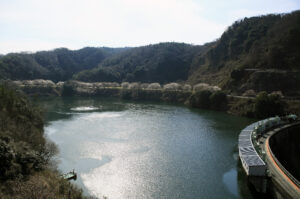
投稿タイプ:sightseeing
Takayama Dam
Enjoy driving and hiking while viewing a row of cherry trees.
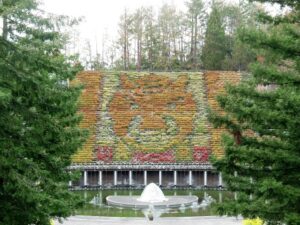
投稿タイプ:sightseeing
Uji City Botanical Park
Opened in October 1996, Uji City Botanical Park has land 10 hectares large, rich in undulation, and interwoven with canals and water fountains. The welcoming 3D waterfront at the entrance, "Tapestry of Flower and Water", is a spectacular view and among the best in Japan. It is 62 meters long and 18 meters high, with close to 3000 flower pots lined up in 46 rows to present a theme or a character related to Uji. The north-eastern (right) side of the park is the autumn area with red leaves, and the south-western (left) side is the spring area with seasonal flowers. There is also the summer area with lotus from Oguraike, and in the greenhouse there are tropical and subtropical flowers available all year. The symbolic plant of the park, the weeping cherry tree, blossoms from mid-March to end of March, during which the park will be open at night free of entrance fee.
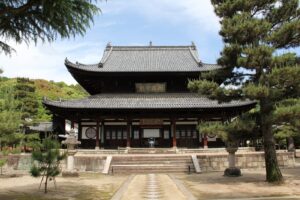
投稿タイプ:sightseeing
Obaku-san Manpuku-ji Temple
Obaku-san Manpuku-ji is the head temple of the Obaku school of Zen Buddhism. It was founded in 1661 by the Chinese monk Ingen, who came to Japan in the early Edo period (1603-1868).
The temple grounds are lined with great Chinese-style temple buildings, giving it an exotic feeling. Visitors can also experience culture from the Asian continent in the form of Fucha vegetarian cuisine, which originates from China, or "Bonbai" sutras read in Chinese rhyme.
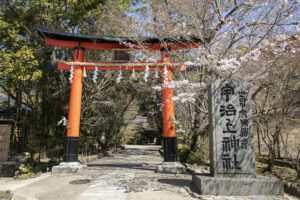
投稿タイプ:sightseeing
Ujigami Shrine
The main hall, said to be the oldest extant example of Shinto architecture, was built during the Heian period (794-1185), and consists of three units connected in the nagare-zukuri style, with larger shrine units on the left and right, and a smaller center one. The prayer hall (a national treasure), is built in a shinden-zukuri-like residential architectural style, and is said to be the remains of the old Uji Imperial Villa. Together with Uji Shrine, this his shrine is said to have originally been Shinto shrines on the grounds of Byodo-in Temple.
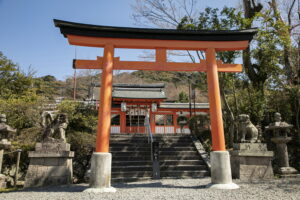
投稿タイプ:sightseeing
Uji Shrine
Standing on the banks of the Uji River, Uji Shrine is said to have been built in the Heian Period (794-1185). Formerly, it was known as the Yawata-miya Imperial Villa (Kirihana Higeta-no-miya), and its enshrined deity is Uji-no-Waki-iratsuko, son of Emperor Ojin. The main hall (an Important Cultural Property) was built in the Kamakura period (1185-1333) in a three-peaked nagare-zukuri style, but there are other remaining cultural treasures as well, such as wooden guardian dogs and Noh masks.
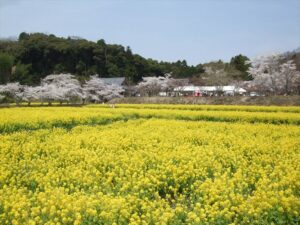
投稿タイプ:sightseeing
Omido Kannon-ji Temple
Omido Kannon-ji Temple is located in the “Infused with Tea” region of Kyoto in Kyotanabe City. The temple was founded over 1300 years ago at the request of Emperor Tenmu. It has been hit by numerous fires and in a fire in 1437 (Eikyo 9) 13 temples and 20 monk's houses were lost. Only Omidou (main hall) was rebuilt and survives to this day.
The main statue is the eleven-faced Avalokiteśvara Bodhisattva, which is made by a technique which paper or cloth is lacquered to make it look like wood, and is registered as a national treasure as one of the only seven eleven-faced Avalokiteśvara Bodhisattva statues in the country.
In spring, the cherry blossoms on the approach to the temple are in full bloom. Also rape blossoms cover the field in front of the temple, which is a spectacular sight to see.
In autumn, the main hall and garden are decorated with fall leaves. A light-up event is held every year and is the best way to enjoy the fall colors at the temple.
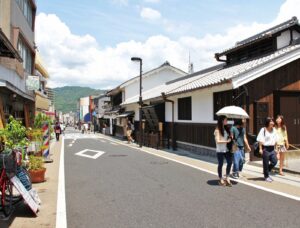
投稿タイプ:sightseeing
Scenery in Central Uji
Along Uji-bashi Street, the homes of tea masters have stood since the Sengoku (Warring States) period (1467-1590), and to this day many tea wholesalers, tea farmers, and others contribute to the charming scenery here.
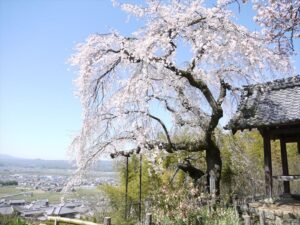
投稿タイプ:sightseeing
Jizozen-in Temple
Standing on a hill and to the south of Tamatsuoka Shrine, Jizozen-in Temple offers a sweeping view over the plains of the town of Ide. The glorious clouds of weeping cherry blossoms that bloom here are designated a natural monument by Kyoto Prefecture, and they are also relations of the weeping cherry trees in Maruyama Park, Kyoto City. The cherry trees are reputed to be some 280 years old.
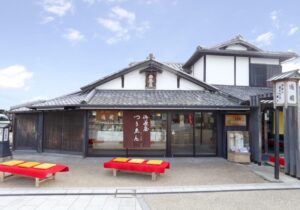
投稿タイプ:sightseeing
Tsuen Chaya Tea house
This long-standing shop was built in 1160, and it is said to have been visited by such historical figures as warlord Toyotomi Hideyoshi, samurai Miyamoto Musashi and his lover Otsu. Visitors can enjoy matcha or sencha dango tea sets and more at the attached café.
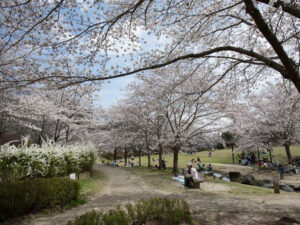
投稿タイプ:sightseeing
Keihanna Commemorative Park
Keihanna Commemorative Park is 24.1 hectares in size, and commemorates the establishment of Keihanna Science City (Kansai Culture and Science Research City) in 1995. The park includes both freely accessible and paid areas. The free areas include the 'Hiroba' a wide open plaza, which has cascading grounds shaped like rice-paddy terraces with large lawns for playing freely, and a childrens' playground. Also free of charge is the 'Tani-ai' valley, made to look like a typical Japanese landscape with a small stream, bamboo grove, and plum garden. The paid area includes the Suikei-en, a Japanese-style garden with a path that brings you around scenery including a magnificent rock cluster, cascading water ponds, colourful seasonal flora and an area to feed carp, making it enjoyable for children and adults alike. Visitors can also enjoy a panoramic view of the garden from Kangetsukyo Bridge, which is 123m long and 4m wide, and 10m above the water. Particularly spectacular is the view of autumn foliage from the Japanese maple tree valley. There, amongst the moss, approximately 80 trees line a small, delicate stream. Inside Suikei-en Garden you can also find Mebuki Forest and Nagatani Pond, which are likewise styled like traditional Japanese landscapes, perfect for a stroll to enjoy nature in all four seasons. Additionally, the park hosts a range of events, from firefly-viewing to star-gazing.